Don’t Miss These 6 Exciting Up-and-Coming Artists With New Work You Can Check Out—Virtually—All Month
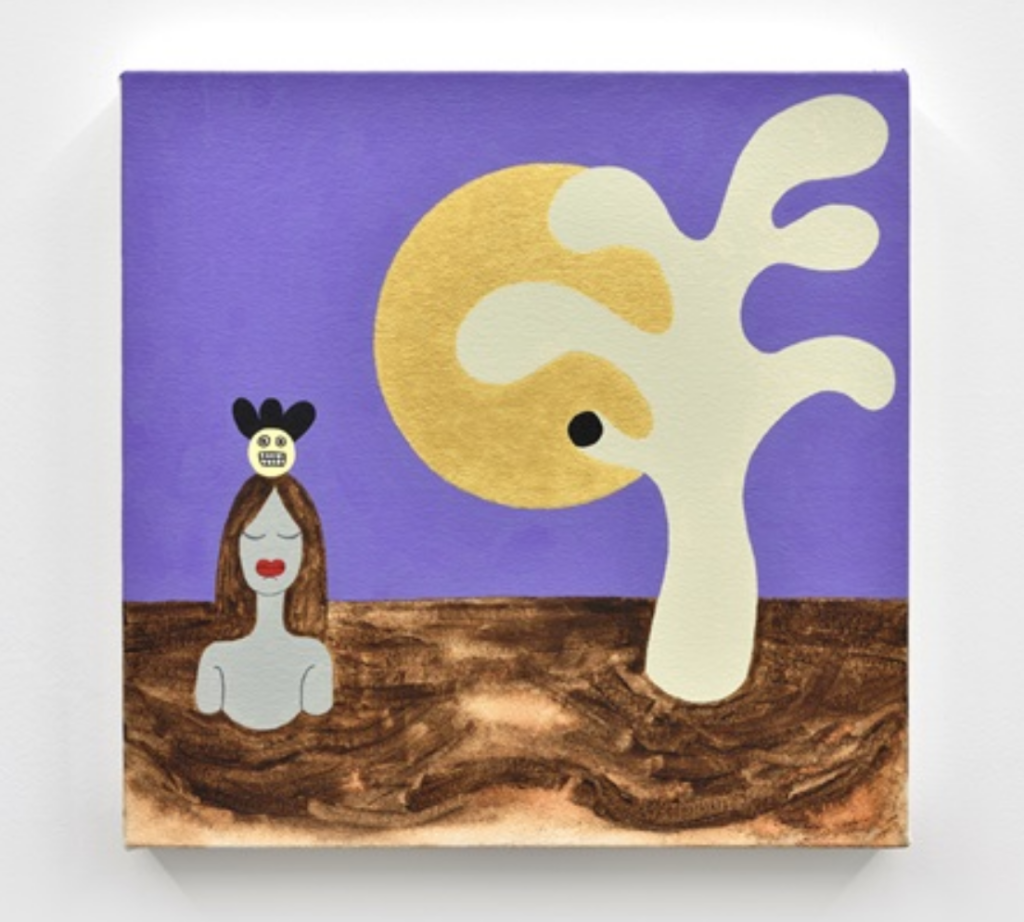

Katie White

As cities across much of the world enter the second month of lockdown, many artists’ long-awaited exhibitions have been moved to online platforms. For emerging artists in particular, exhibitions are a much-needed chance to gain a larger audience.
So, to help keep their momentum going, this month we’re highlighting six emerging artists whose practices you might not know, but should—and whose most recent work can be experienced online through the Artnet Gallery Network.
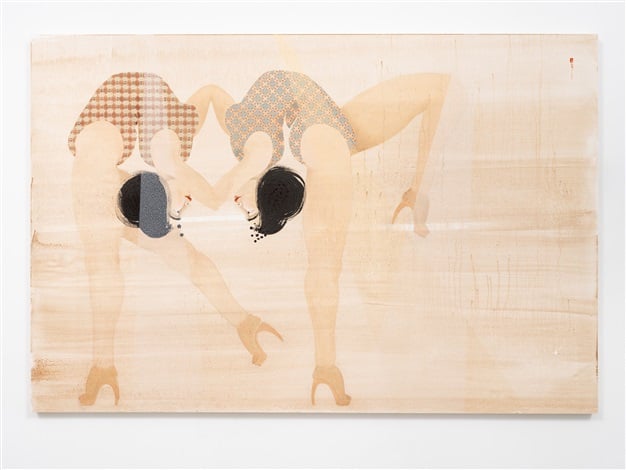
Hayv Kahraman, Walkers (2020). Courtesy of Pilar Corrias.
Iraqi artist Hayv Kahraman presents 10 new paintings and a group of drawings in “Not Quite Human: Second Iteration,” the artist’s first solo exhibition with the gallery. In these works, Kahraman explores the tensions between the “normative” colonizer and the other. Here, women figures are pictured as contortionists, with limbs bent in impossible poses. The pictures are latent with voyeuristic gazes of eroticization and fetishization, yet the gazes of these women are blankly open and unperturbed, acting as a mirror that subvert and challenge the authority the viewer has over the viewed.
Hayv Kahraman’s “Not Quite Human: Second Iteration” is on view through May 14, 2020, Pilar Corrias, London.
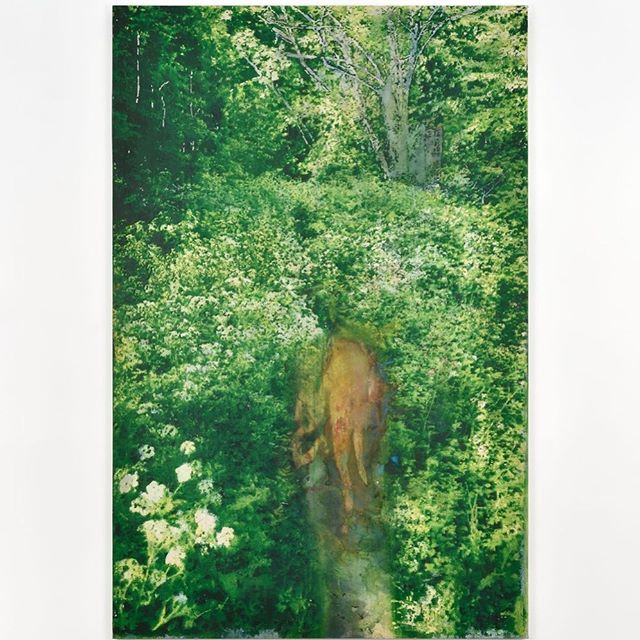
Alexandre Lenoir, The Source (2019). Courtesy of Almine Rech.
Alexandre Lenoir’s paintings come in and out of focus, hovering hauntingly between the known and unknown; the eye keeps moving over their surfaces attempting to find resolutions. Part of this tension is a product of Lenoir’s technique—the artist works from photographs of his own past, which he projects large-scale against his studio walls. These canvases can take several months to come into existence—as the artist slowly fine-tunes his effect. “I’m not trying to achieve a realistic rendering,” Lenoir explained. “In fact, I work in the dark, with masking materials. I use masking tape, layer paint washes, and when I remove the tape, I discover my work. The process is reminiscent of photography: There is latency in the image, it emerges gradually.” Rather than immortalizing a moment in the artist’s own life, the final images instead serve to conjure up memories from the lives of the viewers instead.
Alexandre Lenoir’s work can be seen online with Almine Rech.
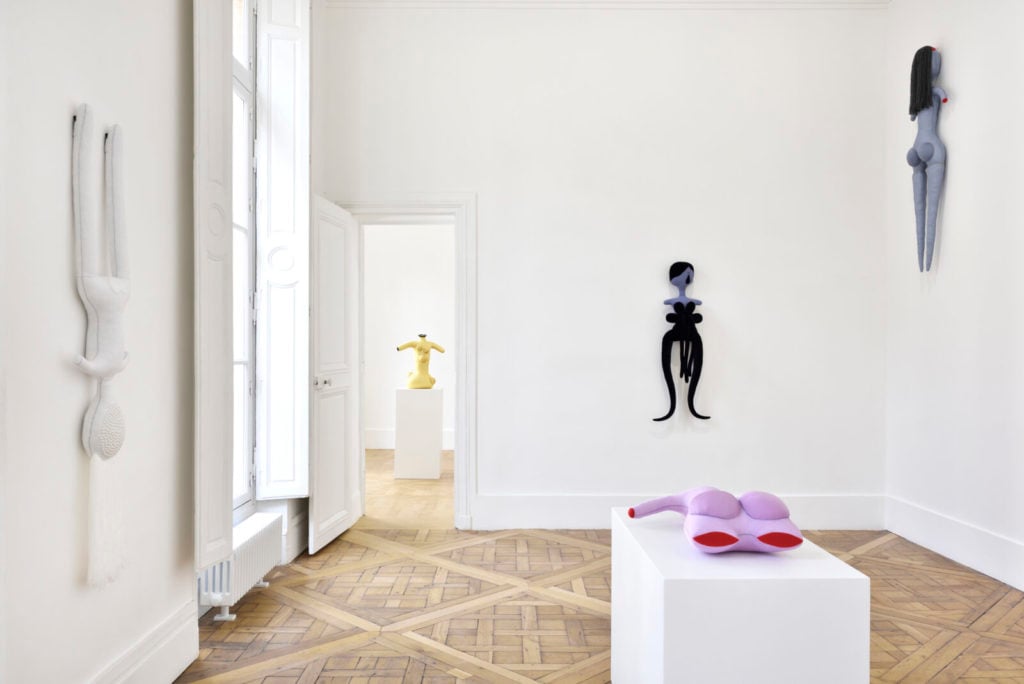
Installation view “Penny Goring: Escape from Blood Castle,” 2020. Courtesy of Campoli Presti.
Delve into the gloomy, girlish imaginary world of the artist Penny Goring through drawings, paintings, sculptures, and video works that explore experiences of trauma on the body, from addiction and violence to aging and grief. Through dreamy symbols, anthropomorphic flowers, and ghost-like apparitions, Goring transforms personal narratives of death and loss into folkloric visual narratives full of wit and even confrontation. In her paintings, flat monochromatic fields of color become like the backgrounds of Byzantine icons, while her fabric doll sculptures appear to conjure both childhood transitional objects and voodoo dolls.
Penny Goring’s “Escape from Blood Castle” is on view online through April 18, 2020, at Campoli Presti.
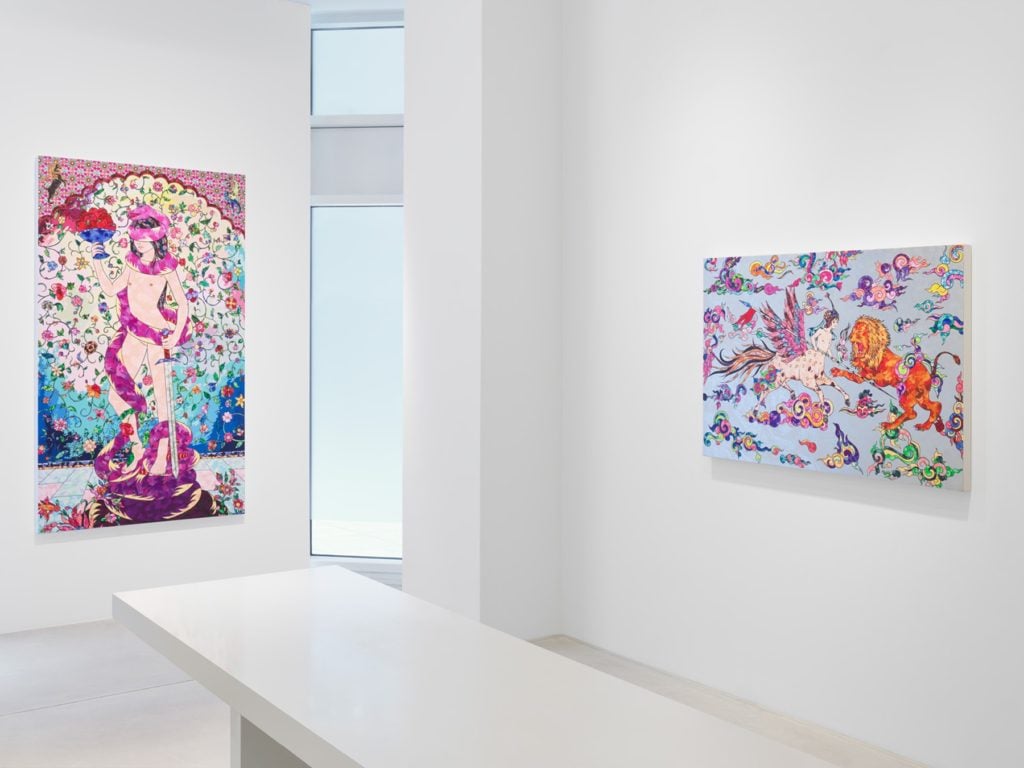
Installation view of “Soraya Sharghi: Seven Labours,” 2020. Courtesy of Setareh Gallery.
In raucously colorful large-format paintings, Soraya Sharghi builds her own 21st-century mythology. The artist finds inspiration both in tales of archaic matriarchal societies and by reconfiguring the ancient visual folklores of the East and the West by placing female figures at the centers of these age-old narratives. She infuses these with new life melding them with memories of childhood fairy tales, Persian miniature painting, Japanese anime, and contemporary literature.
Soraya Sharghi’s “Seven Labours” in on view online through May 23, 2020, at Setareh Gallery.
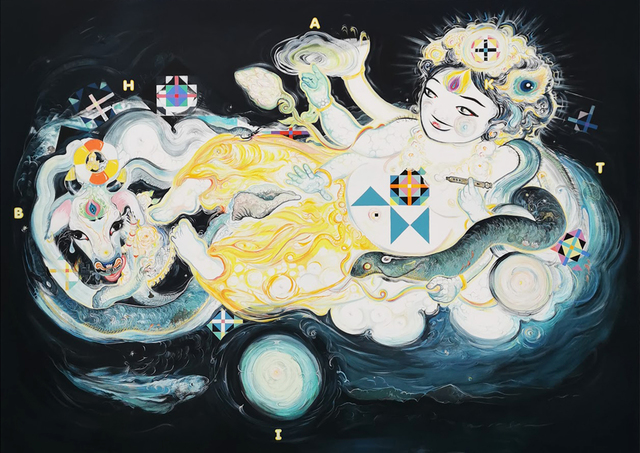
Vidya Gastaldon, Follow Bleunoir (2020). Courtesy of Wilde.
An aura of cosmic well-being saturates Vidya Gastaldon’s new paintings and works on paper. Her exhibition “J’aurais Voulu Qu’on S’aime Tous”—a title that translates to “I Wish We All Loved Each Other”—is filled with beams of heavenly light emanating from deity-like figures who appear full of joy and landscapes that radiate with swirls of colors reminiscent of Joseph Stella’s paintings. The images are welcomingly uplifting and joyous without being saccharine.
Vidya Gastaldon’s “J’aurais Voulu Qu’on S’aime Tous” is on view online through May 1, 2020 at Wilde, Geneva.
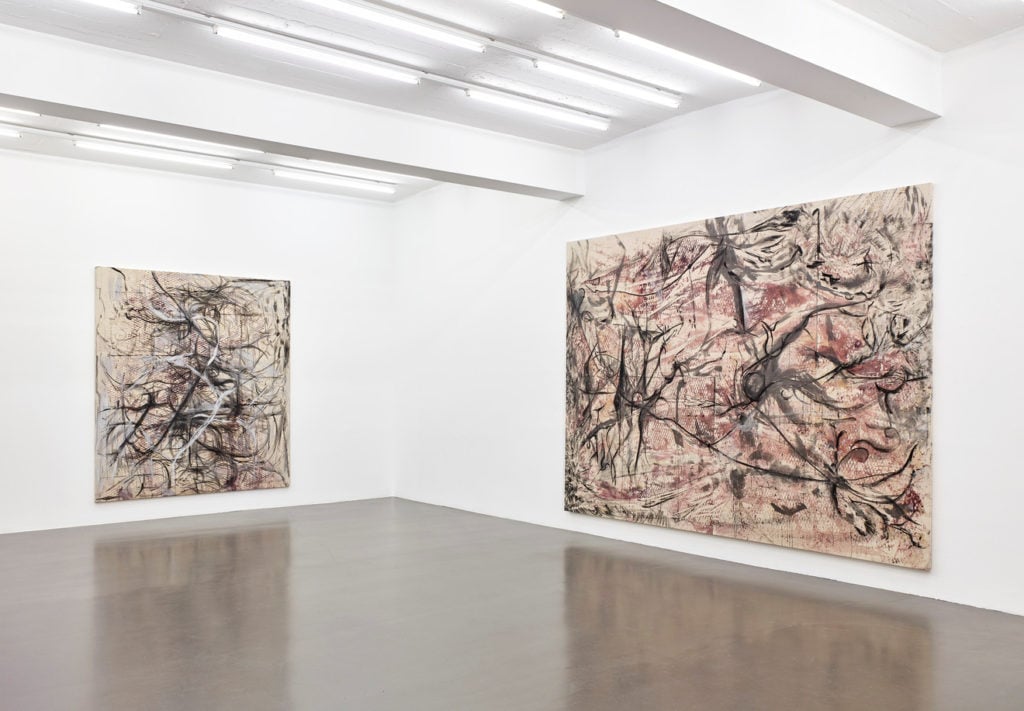
Installation view of “How Long Is Forgotten,” 2020. Courtesy of Sies + Hoke.
For the artist Peppi Bottrop, memory is an unfinished work to be revisited again and again. Channeling memories of his childhood in the rough industrial districts of the Ruhr—along with the other his cities in which he’s lived (including Düsseldorf, Los Angeles, and Mexico City)—Bottrop paints in the spirit of a flaneur, making unexpected turns in dashing marks on this canvases that are sometimes frenetic, sometimes meanderings, but fundamentally exploratory. In images that act as a cartography of his memory of cities, Bottrop mines his own past not as something to preserve and protect, but as a living entity full of new potential.
Peppi Bottrop’s “How Long is Forgotten” is on view through May 8, 2020, at Sies + Höke Galerie.